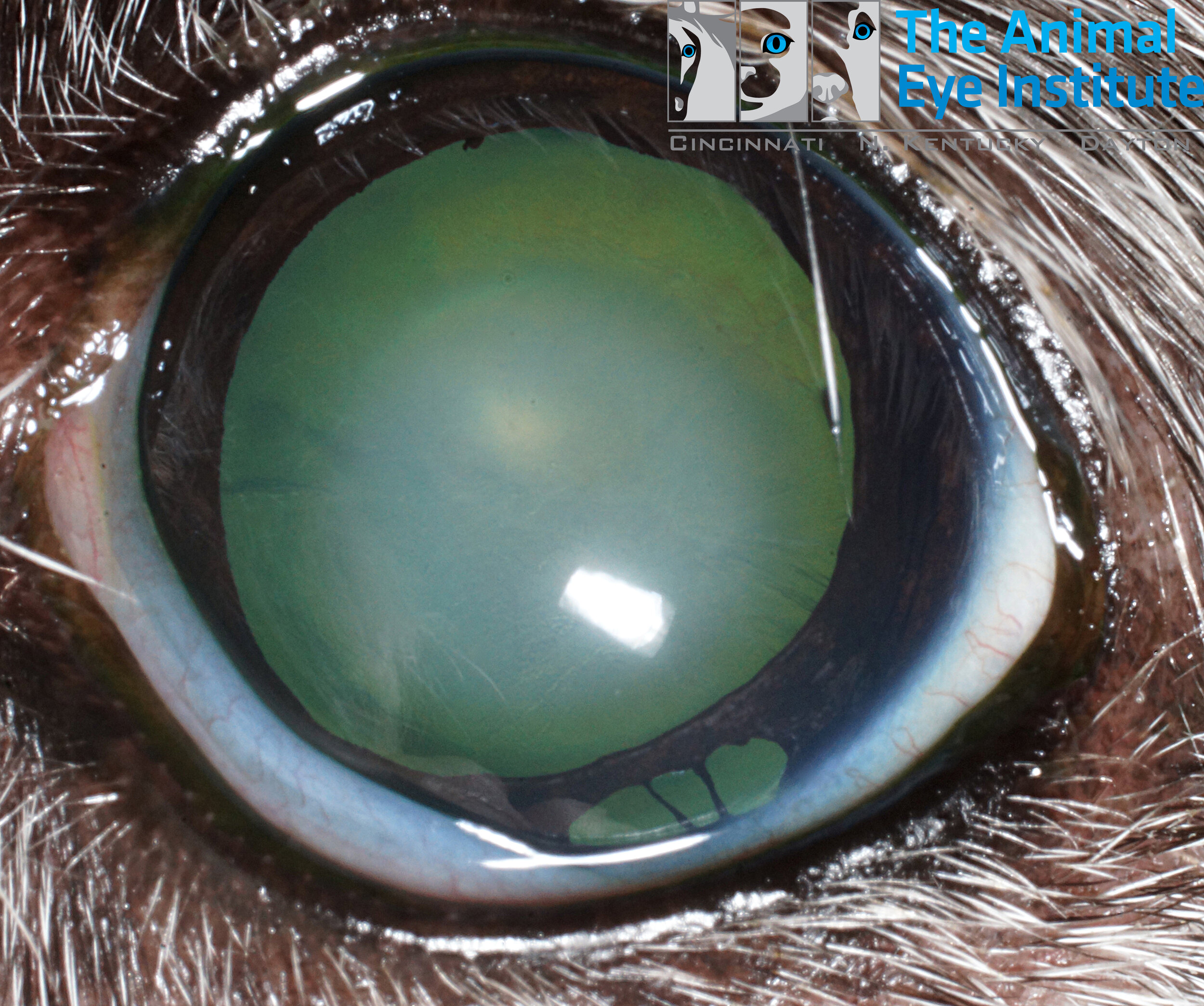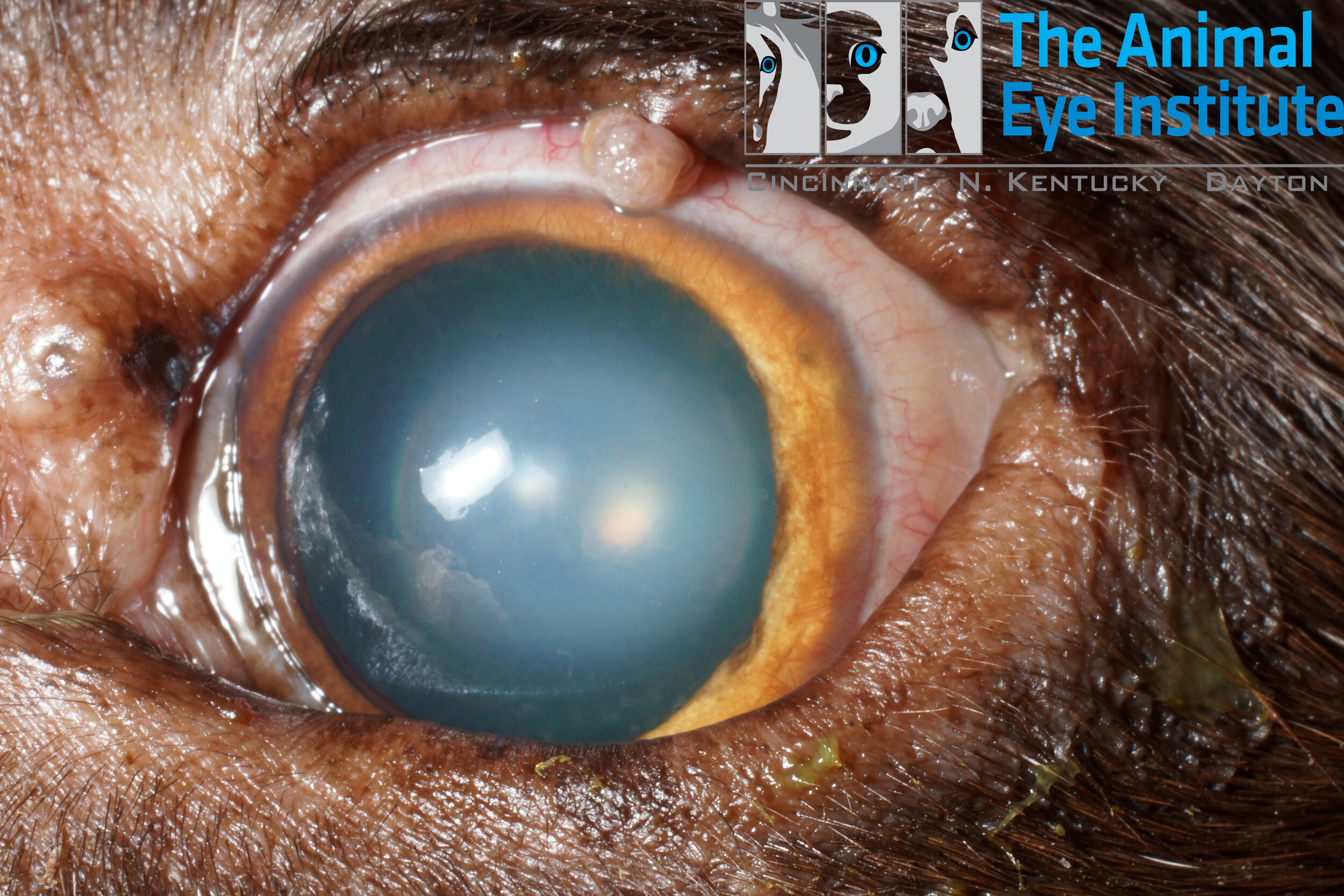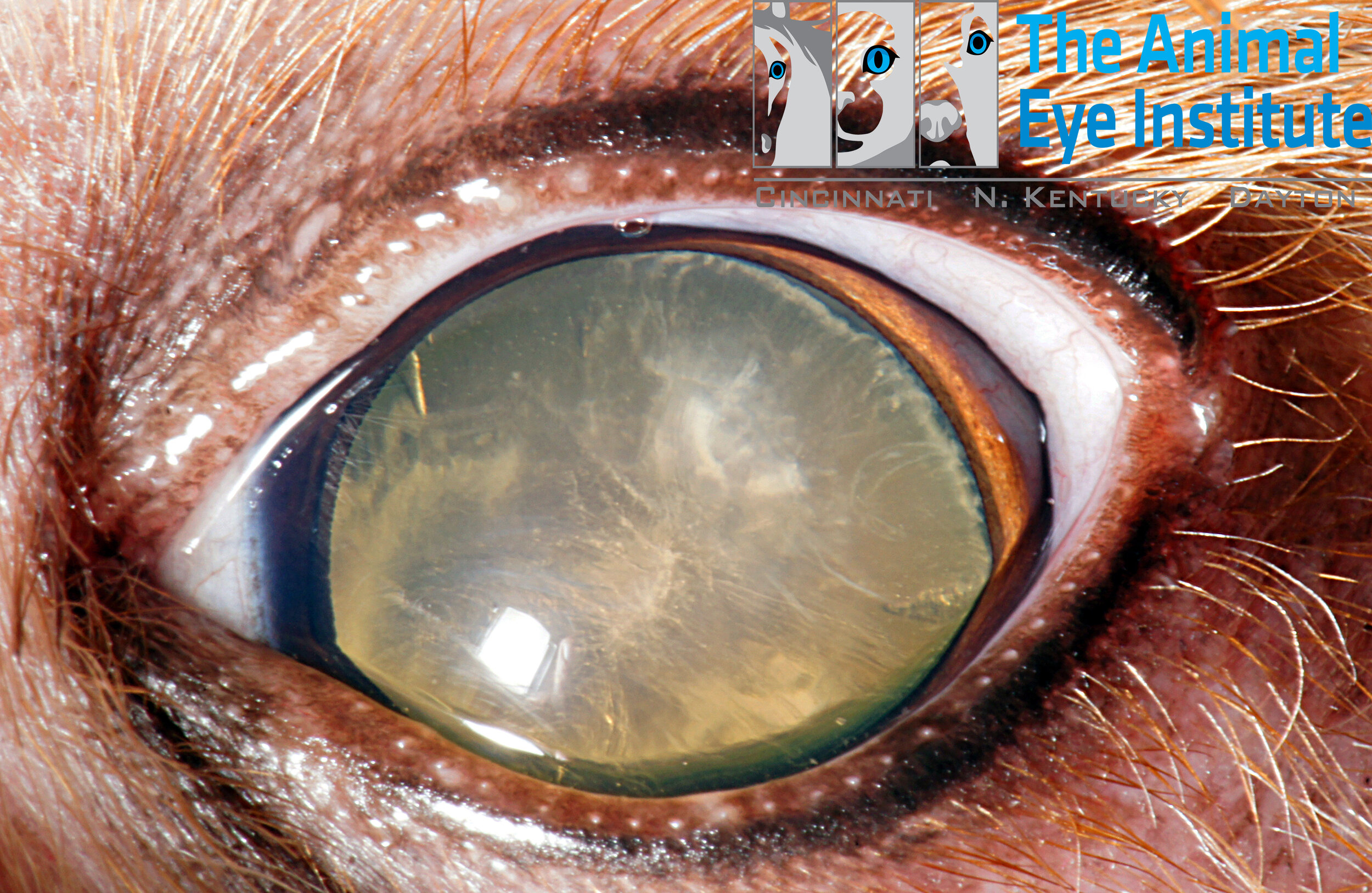Nuclear Sclerosis in Dogs
What is the lens?
The lens is the structure in the eye that focuses light onto the retina, which senses and converts light into electrical signals sent to the brain to create an image. The lens is comprised of three main structures: the lens capsule (membrane that encases the lens), cortex (outer area of the lens), and nucleus (central area of the lens). The lens continues to change and produce new layers throughout an animal’s life. The older, inner layers of the lens in the nucleus are compressed, which allows room for the new layers to be laid down in the outer cortex.
What is Nuclear Sclerosis?
Nuclear (lenticular) sclerosis is an age related change, where the older, inner layers of the nucleus of the lens become compressed & accumulate in the nucleus causing it to become dense and cloudy in appearance.
Who is Affected by Nuclear Sclerosis?
This condition is seen in middle-aged and geriatric dogs. Nuclear sclerosis begins around 6-8 years old and slowly become more obvious with age.
What are Common Signs of Nuclear Sclerosis?
Owners typically notice a cloudiness or blue-grey appearance to their older dog’s eyes. In geriatric patients, nuclear sclerosis can become more advanced with increased cloudiness of the lens, which is commonly mistaken for a cataract. Unlike cataracts, nuclear sclerosis does not significantly affect vision. Geriatric patients with significant nuclear sclerosis can lead to mild changes in vision such as having difficulty seeing details at a farther distance. Geriatric patients that are displaying more severe changes in vision is not due to nuclear sclerosis alone, but is usually due to age related changes of the retina as well.
How is Nuclear Sclerosis Diagnosed?
Nuclear sclerosis is diagnosed by a complete ophthalmic exam by a veterinarian. The pupil is dilated to differentiate between nuclear sclerosis and cataracts. If the patient is having decreased vision at home, it is important to have a veterinary ophthalmologist examine the patient’s eyes with a slit lamp biomicroscopy and fundic exam to evaluate other ocular structures for the cause of vision loss.
What is the Treatment and Prognosis for Nuclear Sclerosis?
Dogs with nuclear sclerosis do not require any treatment, because the condition does not cause any secondary complications to the eye and does not significantly affect vision until late in the animal’s life. All dogs develop varying degrees of nuclear sclerosis as they age.
Dogs with multiple age related changes leading to more significant vision loss benefit from maintaining a consistent and safe environment at home by keeping the furniture in the same place, keeping food and water bowls in the same location, using a baby gate or fence around possible hazards (stairs, pool) to prevent injury, and communicating by using the dog’s sense of hearing or smell.






